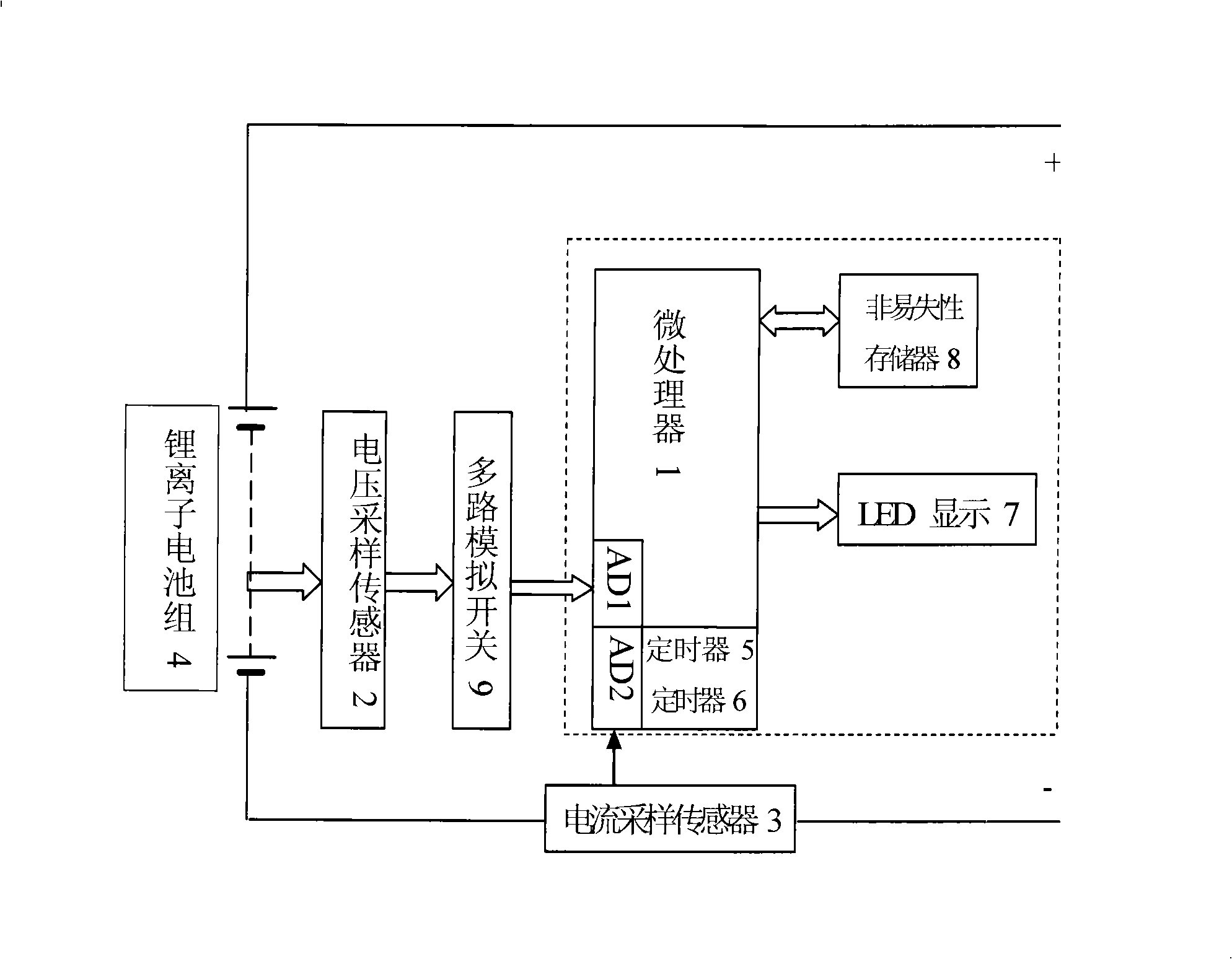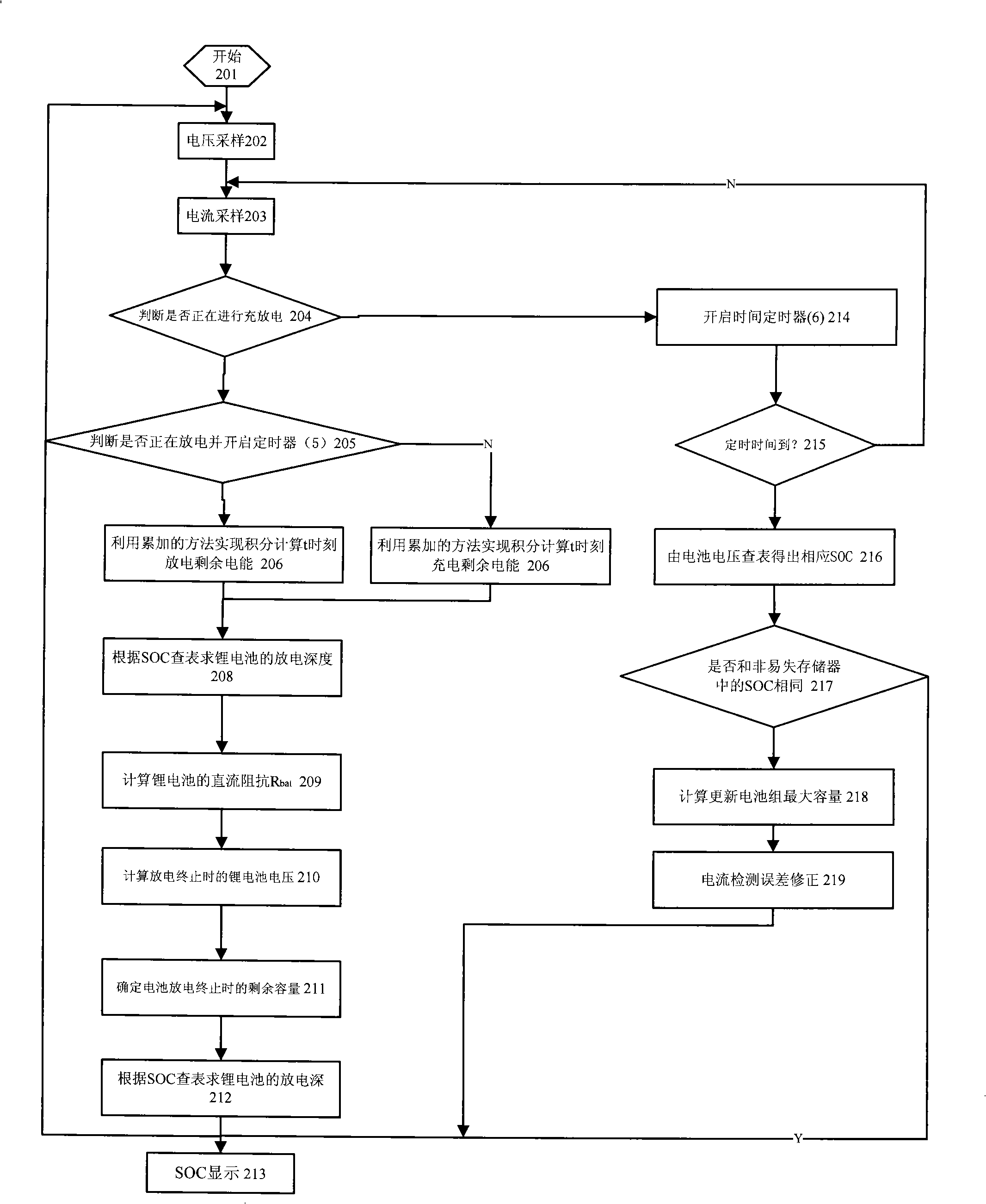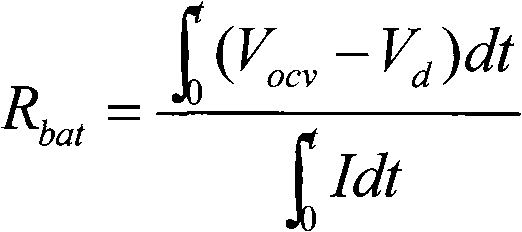Method and apparatus for computing lithium ion batteries residual electric energy
A technology for lithium-ion battery packs and lithium-ion batteries, which is applied in the directions of measuring devices, measuring electricity, measuring electrical variables, etc., can solve the problems of small open circuit voltage, application limitations, and large SOC errors, and achieve the effect of correcting current integration errors.
- Summary
- Abstract
- Description
- Claims
- Application Information
AI Technical Summary
Problems solved by technology
Method used
Image
Examples
Embodiment Construction
[0093] The present invention will be further described below in conjunction with the drawings and embodiments.
[0094] As shown in the figure, 1. Microprocessor, 2. Voltage detection sensor, 3. Current detection sensor, 4. Lithium-ion battery pack, 5. Timer (first timer), 6. Timer (second timer) ), 7. Display module, 8. Non-volatile memory, 9. Select one analog switch. Steps 201 to 218. Flow chart execution steps.
[0095] The lithium-ion series battery pack 4 consists of 14 single battery modules. The manufacturer is Tianjin Lantian High-tech Power Co., Ltd. The capacity of each single battery is 3.6V / 60Ah, and the rated voltage of the lithium-ion battery pack is 50.4V. The maximum limit voltage of each single battery is 4.2V, and the minimum limit voltage of the battery is 3.0V. In addition, due to some special requirements of the electrical appliance itself, the minimum limit voltage of the single battery can be set according to needs, if it is not set , The default is the min...
PUM
 Login to View More
Login to View More Abstract
Description
Claims
Application Information
 Login to View More
Login to View More - R&D
- Intellectual Property
- Life Sciences
- Materials
- Tech Scout
- Unparalleled Data Quality
- Higher Quality Content
- 60% Fewer Hallucinations
Browse by: Latest US Patents, China's latest patents, Technical Efficacy Thesaurus, Application Domain, Technology Topic, Popular Technical Reports.
© 2025 PatSnap. All rights reserved.Legal|Privacy policy|Modern Slavery Act Transparency Statement|Sitemap|About US| Contact US: help@patsnap.com



